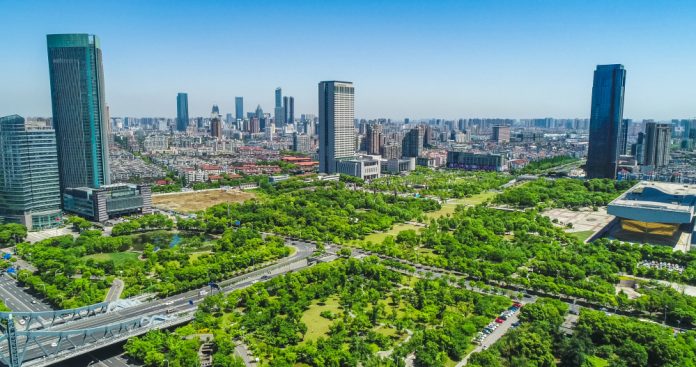Urban ecosystems, once overlooked in the broader environmental conversation, have now become a focal point of restoration efforts worldwide. As cities expand and populations grow, the strain on natural resources intensifies, making the restoration of urban ecosystems both a necessity and a challenge. This article explores the obstacles and successes encountered in the restoration of urban ecosystems, highlighting the importance of these efforts for the sustainability and livability of urban areas.
The first challenge in the urban restoration is land scarcity and urban development pressures. Urban areas are densely populated and heavily developed, leaving little room for green spaces. Competing interests for land use—such as housing, commercial development, and infrastructure—often take precedence over environmental restoration. This makes it difficult to allocate sufficient space for restoring natural habitats within cities.
The second challenge is pollution and degraded environment. Urban ecosystems are frequently subject to high levels of pollution, including air, water, and soil contamination. Industrial activities, vehicular emissions, and improper waste management contribute to the degradation of urban environments, making restoration efforts more complex and costly. Restoring ecosystems in such polluted settings requires significant cleanup and remediation efforts before any meaningful restoration can occur.
Read also: Sustainable urbanization and agglomeration In Africa
The second challenge is fragmentation of habitats. Urbanization often leads to the fragmentation of natural habitats, isolating patches of green spaces from each other. This fragmentation disrupts the continuity of ecosystems, making it challenging to restore and maintain biodiversity. Wildlife corridors, essential for the movement of species, are often interrupted by roads, buildings, and other infrastructure, further complicating restoration efforts.
The third challenge is invasive species. Urban areas are hotspots for invasive species, which can outcompete native plants and animals, leading to a loss of biodiversity. The introduction of non-native species, either intentionally through landscaping or unintentionally through trade and travel, poses a significant threat to the restoration of urban ecosystems. Controlling and eradicating invasive species is a daunting task that requires ongoing management and resources.
The fourth challenge is community engagement and education. Successful restoration of urban ecosystems depends on the active participation of local communities. However, engaging urban populations in ecological restoration can be challenging due to a lack of awareness, competing interests, and socioeconomic disparities. Educating the public about the importance of urban ecosystems and fostering a sense of stewardship are critical, yet often overlooked, components of restoration efforts.
The first success in urban ecosystem restoration is the creation of urban green spaces. Despite numerous challenges, cities worldwide have successfully established and restored parks, green roofs, and urban forests. These green spaces not only provide vital habitats for wildlife but also significantly improve the quality of life for residents. For instance, New York City’s High Line, a former railway converted into an elevated park, is a prime example of how urban infrastructure can be repurposed to support biodiversity and create green oases in densely populated areas.
The second success lies in the innovative use of technology. Technological advancements have played a crucial role in the restoration of urban ecosystems. Geographic Information Systems (GIS) and remote sensing technologies are widely used to map urban green spaces, monitor environmental changes, and guide restoration efforts. Moreover, green infrastructure solutions, such as permeable pavements and rain gardens, have been implemented to manage stormwater, reduce pollution, and enhance urban biodiversity.
The third success is the effective collaboration through public-private partnerships. The success of many urban ecosystem restoration projects can be attributed to the collaboration between governments, businesses, and non-profit organizations. These partnerships have provided the necessary funding, expertise, and resources for large-scale restoration efforts. A notable example is the London Wetland Centre, where a partnership between conservation organizations and private developers transformed a former reservoir into a thriving urban wetland. This project supports diverse wildlife and offers recreational opportunities for city residents.
The fourth success is the emergence of community-led initiatives. Grassroots movements and community-led efforts have become powerful forces in urban ecosystem restoration. Local residents, motivated by a desire to improve their living environments, have taken the lead in restoring neglected green spaces, planting trees, and creating community gardens. These initiatives not only contribute to ecological restoration but also foster social cohesion and a sense of ownership among urban dwellers.
The fifth success is the role of policy and regulatory support in driving urban ecosystem restoration. Many cities have adopted progressive policies that prioritize green space creation, enforce environmental protection, and incentivize sustainable development. For example, Singapore’s commitment to becoming a “City in a Garden” has led to the implementation of policies requiring developers to include green spaces in new construction projects, resulting in a significant increase in urban biodiversity.
The restoration of urban ecosystems is a complex but rewarding endeavor that requires the collaboration of multiple stakeholders, innovative approaches, and a deep commitment to sustainability. While challenges such as land scarcity, pollution, and habitat fragmentation pose significant obstacles, the successes achieved through the creation of green spaces, technological innovations, public-private partnerships, community engagement, and supportive policies offer hope for the future.
As cities continue to grow, the importance of restoring and preserving urban ecosystems cannot be overstated. These efforts are essential not only for the health of the environment but also for the well-being of urban populations. By overcoming the challenges and building on the successes of urban ecosystem restoration, we can create cities that are not only livable but also resilient, sustainable, and thriving with biodiversity.





